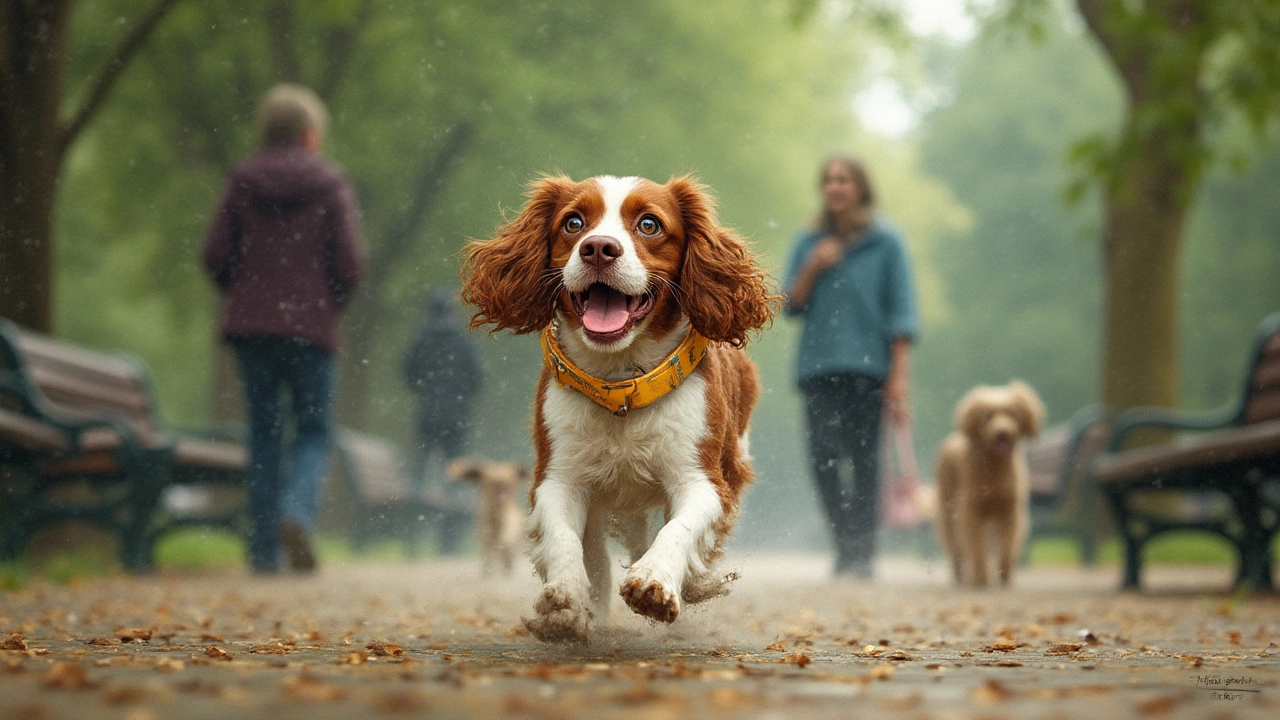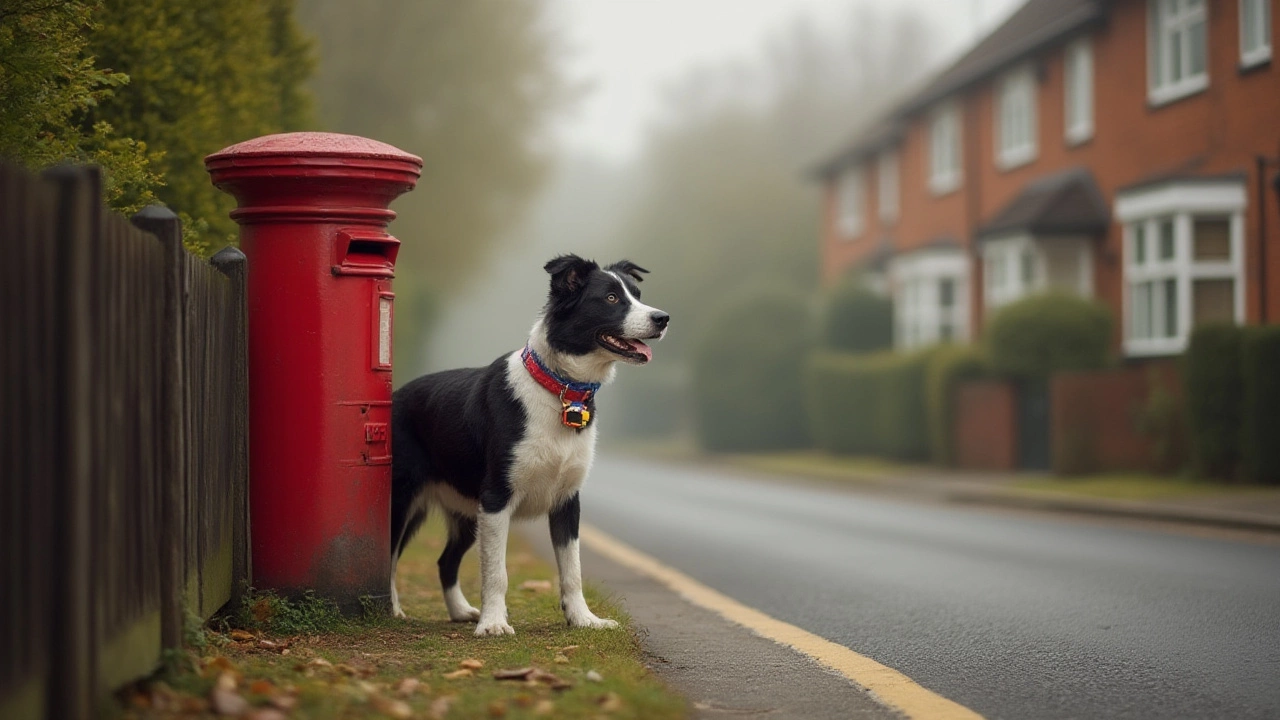Did you know that nearly 15% of lost dogs go missing because they slip right out of their collars during a walk or backyard play? There are dogs who treat every fence, loose latch, or even the simple walk to the park like it’s their own prison break movie. Owners of these hairy Houdinis know the sinking feeling when a joyful pup vanishes from sight, only to return muddy and grinning—or worse, not return at all. Collar choice might be the difference between a routine stroll and a six-hour neighborhood search party, but just grabbing the toughest-looking one at the store doesn’t guarantee your buddy’s security.
Why Some Dogs Escape (and Collars Fail)
Every dog has its own quirks. Some, especially sighthounds like Greyhounds or Whippets, have thin, slippery necks almost as wide as their heads. Pull too hard, and the average flat buckle collar will just slide right off. Even sturdy breeds like Huskies or German Shepherds have tricks up their sleeve when the right temptation presents itself—think squirrels, mail carriers, or a chicken bone abandoned on the sidewalk. Breed biology is only half the story, though. Dogs that have faced shelter stress, past trauma, or separation anxiety may become top-notch escape artists simply because the world outside seems more inviting or less scary.
Now toss in the challenge of collars designed more for looks than function. Skinny leather bands with dainty buckles and “cute” quick releases can be yanked open by an excited leap or a roll in the grass. Adjustable slip collars can gradually loosen as fur mats compress or dogs lose weight. Even “unbreakable” hardware turns flimsy when a determined 70-pound pit mix hits the end of a leash at full speed. Unfortunately, most common hardware store collars focus on color and price tag, not the physics of escape attempts. If you own a skittish rescue, a curious “door dasher,” or just an energetic pup with FOMO, you’re playing a risky game with a standard collar.
Collar fit is just as key as collar style. Rule of thumb: a collar that can slide over your dog’s head with mild pressure is a collar that can fall off in a panic. Friction from fur and skin compresses under stress, turning a snug fit inside the house into a loose slip on the run. Measuring correctly—tight enough for two fingers but not so loose it gapes at the sides—is the doggy equivalent of buying the right shoe size. It’s wild how often escape stories start with “I thought it fit just fine.” Loose collars are basically an engraved invitation to try and make a run for it.
On top of that, raw fear or adrenaline can shrink even the fluffiest dog by an inch or two as they squirm and pull. Vet techs suggest using a tailor’s soft measuring tape right at the midpoint of the neck, then checking after a week of actual use, since many materials soften or stretch. If you haven’t sized up in six months—or you just grabbed something “close enough” at the shelter adoption event—odds are, your pup is at risk.

The Top Collars for Escape-Prone Dogs
When it comes to fighting escapes, not all collars are created equal. Here’s a breakdown of the most reliable types for those dogs who could write the manual on great escapes.
- Martingale Collars: Designed for dogs whose neck measurement is almost the same as their head, like Greyhounds or Basenjis. Martingale collars have a special loop that tightens just a bit when pulled, keeping the collar snug (but not choking) when a dog tries to back out. Super popular among trainers, especially in rescue circles. They’re not just for sighthounds, either; any dog with a knack for wiggling out of regular collars can benefit.
- Breakaway Collars: These have a unique design that releases under serious pressure—think getting caught in a fence, not a playful pull. While great for safety, they’re often not the best for walks or tethering, because a heavy lunge will open the buckle completely. Use these for dogs who might snag their collar in the yard but ONLY with a backup harness or different collar for leash walks.
- Wide-Flat Collars: A 2-inch wide collar spreads out pressure much better than a narrow, spaghetti-thin option. Wider collars have more friction against fur and skin, making them harder to slip off. Pair this with a tough, double-stitched D-ring and a sturdy quick-release—never the thin plastic style—and you’re starting off strong.
- Double-Collar Backup: Some savvy dog owners use a set-up with two collars at once: a properly-fitted main collar plus a slip or Martingale backup, each with separate leash attachments. If one fails, the second stays put. It looks a little funny but keeps options open for creative escape artists who could take a collar business down all by themselves.
- GPS Collars: These aren’t physically escape-proof, but when you need to track a runaway, nothing beats GPS-enabled collars that ping your phone. Some use cellular networks (like Fi or Whistle), others work with Bluetooth and crowd-sourced “find my dog” networks. They aren’t a replacement for good hardware, but they’re the best insurance when your pup vanishes into the wilds.
Materials matter, too. Nylon is tough and dries quickly but can fray over time. Leather doesn’t stretch the way you might think—good for powerful dogs, but can get heavy when wet. Biothane collars (synthetic leather) are crazy strong, waterproof, and easy to clean. No collar can stop a truly determined escape—at least not forever. But picking the right style, fit, and material cuts the odds way down that you’ll spend your Saturday afternoons searching the neighborhood.
Here's a table for a side-by-side collar comparison based on proven performance in tough, real-world scenarios:
| Collar Type | Escape Prevention | Comfort | Safety for Pullers | Ideal For |
|---|---|---|---|---|
| Martingale | Excellent | High | Very Good | Sighthounds, Slippery-necked dogs |
| Breakaway | Good (at home) | High | Best (prevents strangulation) | Yard use, Crate time |
| Wide Nylon/Leather | Very Good | Medium-High | Good | Strong pullers, Big breeds |
| Double Collar Set-Up | Excellent | Medium | Good | Houdini dogs, Escape-prone rescues |
| GPS Collar | Tracking only | Varies | Depends on hardware | Adventurers, Rural dogs |
It’s tempting to go all-in on fancy designs or premium leather, but for escape artists, function beats fashion every time. Choose durability first, or you might find yourself chasing a blur across three backyards after a single snap.

Locking Down an Escape (and Your Dog’s Safety)
Getting the best collar is only the first chapter. If you want your canine’s prison break days to end, combine the right hardware with smart, everyday tactics. Here are some must-try tips:
- Collar Checkups: Dogs grow, shed weight, and fur compresses. Re-measure every month, especially if your dog is under a year old or is particularly active.
- Collar and Harness Together: Use a harness plus collar for extra security. Clip the leash to the harness and a backup carabiner to the collar, or use a double-ended leash (like the ones trainers swear by) for maximum control.
- Practice Calm Exits: Most escapes happen as you open a door, unlatch a gate, or step out the car. Always have your hand on the leash AND collar before moving outside.
- Positive ID: Even with the strongest collar, mistakes happen. Microchip your dog (and check the registration!) and add a tag with contact info that’s easy to read.
- Train a Reliable Recall: No collar can replace a “come” command your dog actually obeys. Carry their favorite squeaky toy, treat, or even a special training whistle whenever possible as backup.
- Safety in the Yard: If your dog can scale fences or work a latch, don’t leave them unsupervised—even for a minute. Cameras can catch escapes, but a second collar or harness can buy you crucial rescue time.
- Specialty Collars for Anxious Dogs: Some brands offer calming or pressure collars and even attachable GPS trackers for anxious or trauma-affected dogs who bolt out of pure panic.
In a 2023 survey by the American Kennel Club, 72% of owners whose dogs escaped admitted that the incident changed their routine forever—most started double-leashing or used a GPS tracker, while others switched collars entirely. Many found that simply swapping out an old, stretched collar for a new Martingale cut escape attempts by half almost overnight. It’s not magic, just mechanical advantage and a dash of common sense.
Nothing’s foolproof—dogs are born curious, and some seem to have a sixth sense for a moment of weakness, an unlocked gate, or a collar that’s just a hair too loose. But with a escape proof dog collar, regular checks, and a healthy dose of owner paranoia, you can keep your best friend’s adventures limited to safe walks and muddy backyard missions, not panicked midnight searches. The key isn’t just buying a product, it’s matching it to your dog’s quirks and habits like you’re their personal security consultant.
If you’ve ever had one of those panicked “my dog is missing” moments, you know the value—not just in dollars, but in peace of mind—of the right collar. Next time you spot your dog sniffing the fence line or eyeing the neighbor’s garden, you’ll know you have the tools (and the neckwear) to keep them right by your side, safe and sound. No dog collar is perfect, but with the right set-up and a bit more vigilance, your four-legged Houdini is more likely to end up on your couch than lost on the evening news.

